Michael Clements: Councillor and Shire President
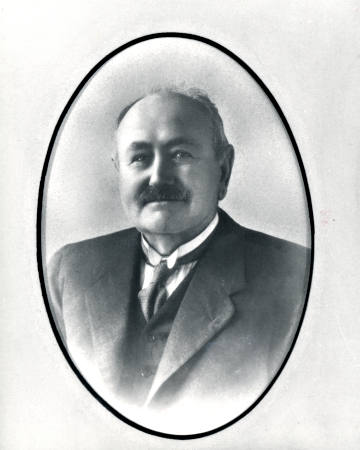
Michael Clements, President Shire of Moorabbin 1905-06, 1923-25. Courtesy City of Kingston, Kingston Collection.
I will begin the story of Michael Clements with his father, John, who was born in County Donegal, in the far West of Northern Ireland in 1831. In terms of size and area it was the largest county in Ulster and the fourth largest county in all of Ireland. County Donegal was one of the worst affected parts of Ulster during the Great Famine of the 1840s in Ireland. Vast numbers of people were devastated by starvation and disease, particularly cholera, and many areas of the county became permanently depopulated. During this period 75,000 Irish men, women and children died and two million emigrated. One among those who left Ireland was John Clements.
John had the urge of adventure strong within him, but Ireland, with its limited horizons at this time, did not afford the possibilities of advancement that he so ardently desired. He probably heard tales of Australia, the land of opportunity for those who were not afraid to ‘blaze the trail’, and endure the preliminary hardships. In 1853, John married Ellen Sharkey and made his decision to emigrate to Australia.
John and Ellen arrived in Melbourne as assisted passengers, (the government paid for the trip) in 1854. Gold had been discovered by Europeans in 1850 and the Gold Rush in Victoria had begun in earnest by 1854. John, however, was not tempted to search for gold, rather did he engage in transporting goods between Melbourne and the goldfields in a bullock wagon. He continued with this work for five or six years. [1]
As a result of hard work, sound judgment and frugality, he acquired sufficient capital to purchase eleven acres of land, half way between Dendy Street and South Road. The area was right in the centre of a 50 acre block and there he installed himself as a market gardener. After the settlement of Melbourne in the 1830s and the creation of the Colony of Victoria in 1850, migrants established market gardens in the sandy soil to the south. Often illiterate and lacking in trades or extensive agricultural experience, these individuals were prepared to battle the climatic conditions, and use manure in order to improve the fertility of the soil to produce saleable crops.
With the continuation of hard work, John’s efforts were rewarded with success. Ultimately he acquired the holdings of his neighbours, and became the sole owner of the original 50 acre block. John and Ellen had begun their family in 1856 and finished with four boys and four girls. Michael Clements, the second child, was born on 25 September 1857 at South Road Brighton. [2] Throughout his childhood, Michael attended a primary school in Brighton while assisting his family in the market gardening business.
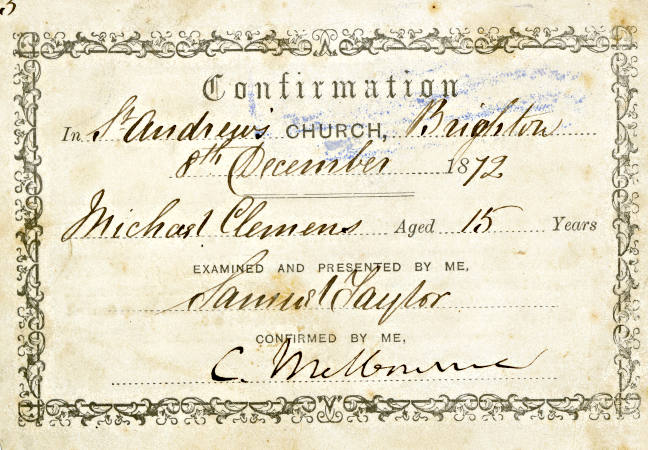
Confirmation Card of Michael Clements when confirmed at St Andrew’s Brighton by the Bishop of Melbourne , the Right Reverend Charles Perry, 1872. Courtesy City of Kingston, Kingston Collection.
Michael married Louisa Marquis on 25 December 1879 in the residence of the Methodist minister at Lygon Street Carlton.[3] Her family originated in the Channel Islands. In due course, four children were born: Arthur b.1880, Norman b.1882, Eleanor (Nellie) 1884 and Stanley b. 1886.
Michael had followed his father into the market gardening business, working several properties in East Brighton (Bentleigh) in 1896. Rate Records for that year list him as the owner of a house and ten acres of land in McGuinness Street, seventeen acres of land in Centre Road and twenty eight acres of land and a weatherboard house in Bent Street. In addition he was the occupier of thirty five acres of land in East Brighton, two acres of which was owned by Thomas Bent. Working this land was no doubt hard work, even with the assistance of his three sons. Frank Le Page described market gardening in this era as ‘continuous back-bending hard work which required you to work in all kinds of weather. We used to use a single furrow plough pulled by a horse. Generally we started work at seven o’clock and finished at five or six in the afternoon. On market morning we would be out bunching carrots and parsnips in threes, and loading the truck ready to leave the next morning at two o’clock. Up until the 1930’s we used to carry the vegetables to Victoria Market by horse and cart twice a week.’ [4]
The market gardeners were known as a tough bunch. Former Shire President John Allnutt told his grandson, ‘There were a few blokes amongst the market gardeners who could fight, and when it looked as though a bit of an argument was brewing, the word quickly spread. It became known that if you picked an argument with a grower, you were likely to get a hiding.’ [5]
Michael Clements over many years served as a councillor in several municipalities. He first joined the Shire of Moorabbin Council in August 1896 as a representative of the North Riding and continued in that role until 12 March 1910. He was president for one year, 1905/06. After resigning from the Moorabbin Council and moving to Mornington Junction, to take up the occupation of grazier,[6] he was elected to the Frankston Council while at the same time being a councillor in the Borough of Oakleigh. Michael returned to the Shire of Moorabbin in 1919 and initially was living in Patrick Street, Cheltenham. (Patrick Street was later renamed Jellicoe Street.) At that time he was probably living with his daughter Eleanor Louise who had married Charles Dunlop Dwight. [7] Later he moved to a house on the corner of Point Nepean Road and May Street Cheltenham, on the Garfield Estate, which was named Lock Lomon.
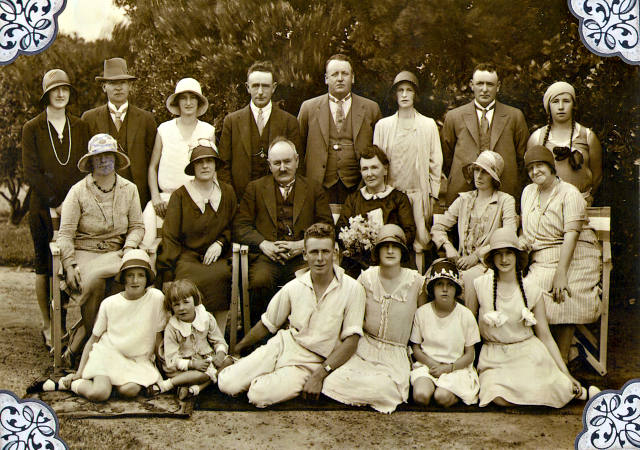
Fiftieth Wedding Anniversary Family photograph taken on the tennis court at daughter Nellie’s (Eleanor) Dwight’s home , Jellico Street, Cheltenham. Back row, -, Charlie Dwight, - , Norman Clements, Arthur John Clements, - , Stanley Alexander Clements, Joyce Cecelia, Centre row: Ida, Nellie (Eleanor) Dwight, Michael Clements, Louise Clements, Mary, Hannah, Front row: -, Valeria, Tom, Dorothy, -, - . Courtesy: Lisa Judd, Kingston Collection.
In April 1922 Michael stood for a Moorabbin Council vacancy in the Cheltenham Riding caused by the retirement of Cr Fairbank. Standing against W G Jewell, a well-known Cheltenham businessman, he gained a majority of 149 votes in an election in which 455 votes were casted. At the declaration of the poll he thanked the people who elected him saying he was not going into the Council pledged to do anything, but his first concern would be to try and get more water and road metal for the ratepayers out back. He said he had plenty of time to devote to the work and he doubted whether there was any man that travelled so much over the roads of the Shire as he did. He could not see why if they had good management they should not get more road metal for the roads. [8] The following year he was elected shire president. By June of that same year it was reported that he was proving himself to be a hustler in council advocating the construction of several streets in Cheltenham and the reconstruction of Centre Dandenong Road. [9] In 1924/25 Michael Clements was again elected president.
During Michael Clements’ time as a councillor, he was an advocate for other issues including the building of a memorial to those men who had died in the First World War, the granting of land to form a golf club in the Cheltenham Park and the building of a new facility to accommodate council officers at Moorabbin. He also said he was on a mission to square the municipal ledger, an undertaking that he believed was not a light one. He told his council colleagues that he was there to get the council out of debt. While recognizing it was not an easy task he said if he was successful ‘he would have earned a reputation which does not fall to the lot of many councillors.’ [10]
As President of the Shire of Moorabbin in 1923/24 he called a public meeting to consider what steps should be taken to provide a suitable memorial for the war dead. He argued that the raising of £1000 was not unrealistic in a wealthy district where the people were generous. [11] In 1927 he supported the actions of a local committee seeking a grant of land in the Cheltenham Park to form a golf club. Clements pointed out that few people took an interest in the park and he couldn’t understand the narrow-minded views of those opposing the granting of the land. [12] The following year he chaired the meeting for the laying of the foundation stone of the new council building and later the function at the official opening. In his speech on the latter occasion he drew attention to the contribution of Sir Thomas Bent, the ‘father of the district’ and a man always ready to help the ’under dog’. [13] At the time of his retirement from council it was written, Cr Clements during the many years he has been connected with the Moorabbin Council has been an outstanding figure in municipal politics, and in the early years of his career he had made many judicious decisions that have been fraught with momentous results. In his time many storms of council life have raged round him, but his quick ready wit and action have invariably brought him through. … A great fighter, he had in his early days a great tutor in that great statesman and councillor, the late Sir Thomas Bent, and nothing in the actions of that great man was missed by his youthful admirer, so that as far as the Council of the Shire of Moorabbin was concerned, the mantle of the one descended to the other.” [14]
Shortly after the commencement of Michael Clements’ first term in Council he was charged at the Cheltenham Court with spreading nightsoil on his land in Centre Road, contrary to the provisions of the Health Act 1890. The bench considered him guilty and fined him £10 with £5 5s costs. Clements appealed against this conviction with his lawyer arguing that he was not guilty of the offence; that the conviction was insufficient, uncertain and bad in law; there was no evidence to support the conviction; that evidence was wrongly admitted; that the section 255 of the Health Act 1890 was not in force in Moorabbin, and that the fine was excessive. [15] Judge Molsworth at the Melbourne General Sessions dismissed the appeal with £7 7s costs. [16]. Less than a year later Michael Clements was again before the Cheltenham court charged with the same offence. Proved guilty, the fine this time was £20 with £5 5s costs, or in default one month’s imprisonment. [17] It was at this time that Cr Thomas Bent announced his intention to raise in council the question whether gardeners should be permitted to use nightsoil. While he said he had no axe to grind he was doing his duty because a large number of ratepayers in his riding desired that such permission be given. As the matter stood he said, ‘it was unfair because these people saw fertilizing material carted past their own doors and used in an adjoining municipality with impunity, whilst if they used it they were subjected to heavy penalties.’ He wanted all previous resolutions relating to nightsoil rescinded. Clements supported this action. [18] At the commencement of a subsequent meeting of council when it was expected a motion from Cr Bent would be discussed, a bare quorum of councillors were in attendance and Cr Bent who raised the issue failed to put in an appearance. The matter was then dropped. [19]
While Michael Clements experienced the wrath of the law in the 1890s in 1909 he became a member of the bench at the Cheltenham Court. He was appointed a Magistrate on 21 July 1909. [20] From that time he was a diligent member of the bench judging cases involving, for example, use of obtrusive language, parental obligation to ensure a child attended school, wandering and grazing stock, women fighting in the street and acts unfit for publication. For some of the time over the twenty five plus years he sat on the bench presiding over the business of the court. He was chairman of the police court until the failure of his health and eventually death.
In addition to this work as a councillor and a member of the bench of the Cheltenham Court, Michael Clements was involved in a number of other community groups, including being president of the Cheltenham Branch of the Protestant Federation, trustee of the Cheltenham Recreation Reserve as well as being actively engaged as a member of the Market Gardeners and Growers Society and as either Treasurer or Secretary of the Market Gardeners and Growers Picnic Committee for 44 years. [21]
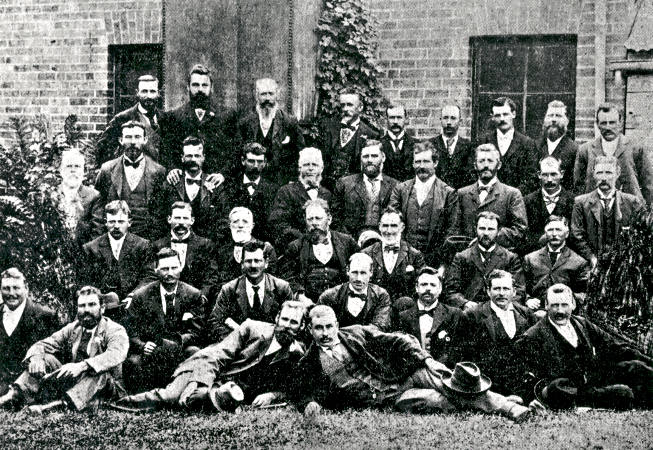
Market Gardeners Picnic Committee 1902. Michael Clements back row, far right. Courtesy City of Kingston, Kingston Collection.
For over a quarter of a century Michael Clements was an enthusiastic member of freemasonry in Victoria. He was initiated into the Freemasons, Moorabbin Lodge in 1902 and by 1907 he had been elected Worshipful Master. Later he was secretary for several years. He was instrumental in facilitating the formation of another two lodges and by 1921 was a member of Grand Lodge with the rank of Past Senior Grand Deacon. Michael was very active in the pursuit of a suitable building for a permanent home for the Lodge in Cheltenham and in 1926 a block of land was purchased in Point Nepean Road. The temple was built in 1930 and the first meeting was held in June 1930 when 79 people attended. He was elected the first Worshipful Master of Ensign Lodge. The following comments came from the minute book of that year. ‘An enlarged photograph of Wor Brother Clements was unveiled at the August meeting by the Wor Master who paid special tribute to the excellence of Bro Michael’s work for the Moorabbin Masonic Community.’
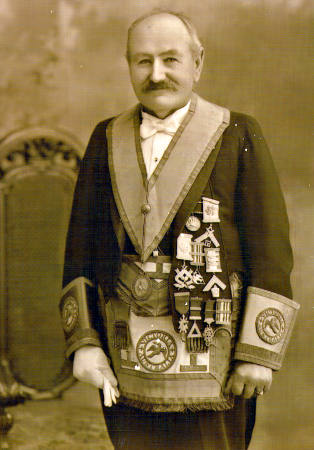
Michael Clements wearing Masonic regalia, c1930. Courtesy City of Kingston, Kingston Collection.
Michael Clements died on 13 March 1936 aged seventy eight years. The funeral cortege left his residence, Loch Lomon, for the Cheltenham Pioneer Cemetery where his three sons, Arthur, Norman and Stanley, together with his son in law, C D Dwight carried the casket. His funeral was attended by hundreds of people, councillors from the City of Moorabbin, and a very strong representation from the Masonic Community.
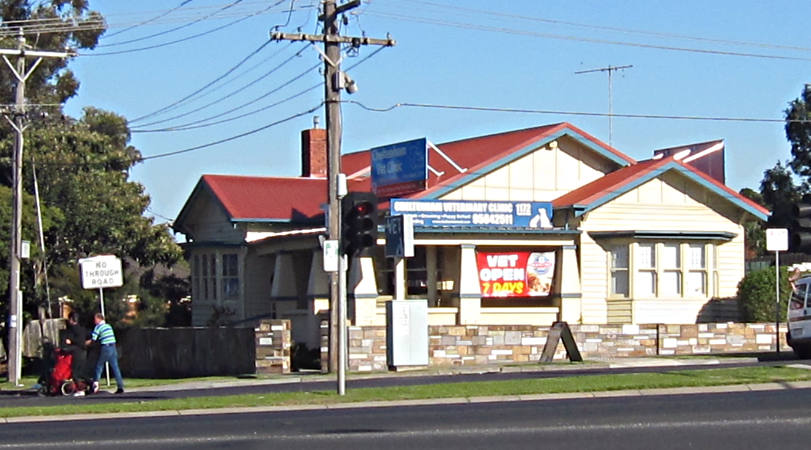
Loch Lomon 2013. Courtesy City of Kingston, Kingston Collection.
Footnotes
- Australia: Past and Present, Centenary Book of Australia.
- Birth records give his name as Michael Clemens.
- Marriage Certificate, Births Deaths & Marriages.
- See, Whitehead, G., Market Gardening in Kingston, Kingston Historical Website.
- White, P., Talking with Piri: Narratives of Kingston, 2001, p28.
- Australian Electoral Roll 1914.
- This was the address listed for Michael Clements in the Electoral Rolls of 1919.
- Moorabbin News, 25 April 1922.
- Moorabbin News, 24 June 1922.
- Moorabbin News, 13 May 1922.
- See, Whitehead, G., The Cheltenham World War One Memorials, Kingston Historical Website.
- See, Whitehead, G., The Beginning of the Cheltenham Golf Club, Kingston Historical Website.
- See, Whitehead, G., New Council Chambers at Moorabbin, Kingston Historical Website.
- Moorabbin News, 17 August 1935.
- Cheltenham Leader, 5 June 1897.
- Cheltenham Leader, 17 July 1897.
- Cheltenham Leader, 25 June 1898.
- Cheltenham Leader, 25 June, 1898.
- Cheltenham Leader, 23 July 1898.
- Victorian Government Gazette, 21 July 1909.
- Moorabbin News, 21 March 1936.
